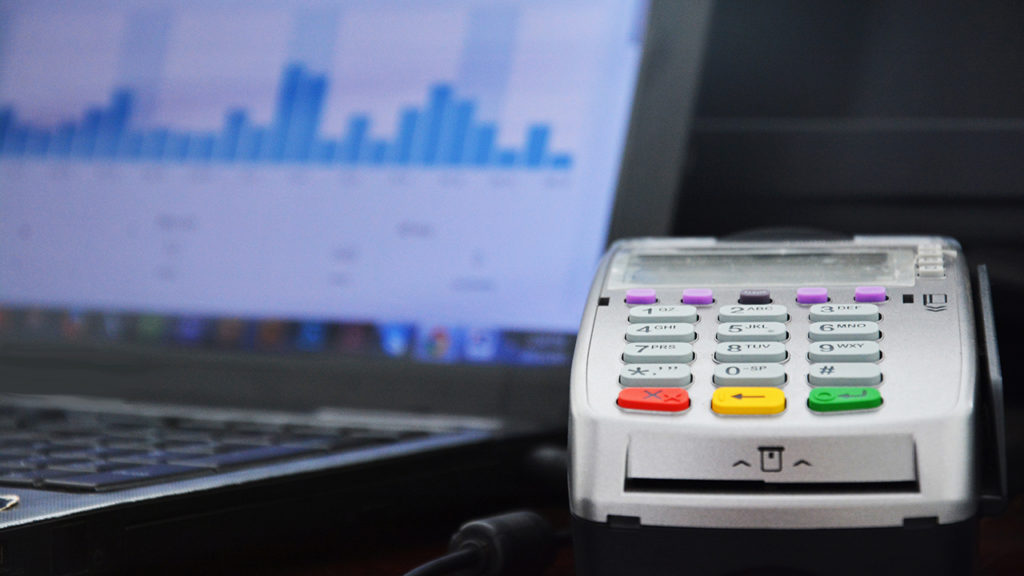Working with a Payment Gateway
A payment gateway is a system that merchants use to accept credit and debit payments. The gateway creates a juncture between two important channels where money travels—one end of the gateway is the merchant, while the consumer’s bank awaits on the other side. The various elements that comprise a gateway are there to ensure the transaction’s security.
At CSG Forte, we develop payment processing platforms that operate as a robust gateway. Our custom payment processing solutions protect businesses across multiple industries while facilitating efficient transactions.
Payment Processors vs. Payment Gateways
A payment gateway exists in front of a payment processor, which is a financial institution or system that accepts the payments customers submit to your business. Your business’s payment processor may be a part of its merchant account, or you can outsource payment processing.
Financial information travels through the payment gateway before it reaches the payment processor. The gateway verifies and encrypts the information before it travels to your merchant account. It will deny fraudulent or invalid payment information. Payment gateways are especially important when processing e-commerce transactions because they offer powerful identification and verification capabilities.
Key Components of a Payment Gateway
A payment gateway should include these functionalities:
- Payment data authentication: The gateway analyzes incoming data to verify its legitimacy.
- Encryption: The gateway encrypts the customer’s payment information for processing.
- Payment processor integration: The gateway allows the seamless transfer of encrypted financial data to the payment processor.
- Financial settlement: The gateway also delivers encrypted data to the business’s bank for settlement.
Developing a payment gateway is a complex process. It must integrate numerous capabilities and security measures, including the following.
Infrastructure Development
The gateway’s infrastructure lays the groundwork for its immediate functionality and its longevity. The infrastructure begins with a server, which must be capable of withstanding your business’s traffic. Choosing a third-party gateway server can help you meet current needs and scale as traffic changes.
Data Security Measures
Your gateway must contain robust security measures, beginning with encryption protocols. Encryption is the process of converting financial data into a unique code that only devices on your server are authorized to decipher.
Tokenization is another form of data security. Under tokenization, the security system replaces each piece of financial data—such as a credit card number—with a discrete, secure token. Your gateway’s security system will be able to convert each token back into its original format.
Payment gateways also include fraud detection measures to protect your customers and reduce the risk of your business losing money to chargebacks. Your gateway will analyze data and user behavior to detect fraudulent purchases.
All gateway data security measures must meet Payment Card Industry Data Security Standards (PCI DSS) standards.
Integration With a Payment Processor
Your gateway must integrate with your current payment processor—or you must choose a processor compatible with your gateway. After selecting a processor, you can integrate it with your gateway by obtaining the processor’s Application Programming Interface (API) key. Your gateway will also need a separate API key that catalyzes the transfer of customer data.
Compliance and Regulatory Considerations
As you integrate payment gateways, it’s important to remain aware of certain regulatory considerations. Follow global, national and regional laws along with PCI DSS standards.
PCI DSS establishes 12 security standards for merchants to follow when collecting credit card or debit card information. Compliance requires diligence and constant effort, as it is ongoing and varies with your business’s size. PCI DSS compliance is key when reducing risks derived from cyber threats that can impact your company’s financials and reputation.
The following steps are part of PCI DSS requirements:
- Use and maintain a firewall
- Protect stored cardholder data
- Update default passwords and security measures
- Use and update antivirus software
- Encrypt cardholder data when transmitting it
- Keep data on a need-to-use basis
- Develop and implement security processes and systems
- Routinely check security systems
- Create and maintain an information security policy
- Implement user IDs for everyone with computer access
- Monitor and restrict access to cardholder data
- Track who accesses cardholder data and networks
References to PCI DSS are included as a general guide. Complying with PCI DSS would require due diligence and analysis about your scope and specific requirements. Find additional information here.
The Benefits of Using a Payment Gateway
A payment gateway can offer numerous advantages for your business, especially when you partner with an experienced developer. Core advantages include:
- Improved user experience: Payment gateways provide security alongside seamless payments. Consumers will appreciate the ease of using your online store and peace of mind knowing their data is safe.
- Bolstered security: A payment gateway offers the strong security that comes with fraud detection and data encryption or tokenization. Your customers’ data will remain secure, and your business will mitigate chargebacks.
- Expedited payment processing: Payment gateways automate processes for peak efficiency. Customers will enjoy faster checkouts while your business receives its revenue sooner.
- Enhanced scalability: Implementing a payment gateway will back your business with the security infrastructure it needs to expand into new territories domestically and abroad.
CSG Forte’s Payment Gateway Solution
At CSG Forte, we offer a versatile payment system that facilitates the efficient, secure transfer of financial data from your customer to your merchant account. Our system features a payment gateway with the full range of features your business needs to maximize data security. It offers:
- Robust security protocols
- Seamless integration with leading payment processors
- Compliance assurance
- User-friendly dashboard and reporting
Why Choose CSG Forte Over Building Your Own Payment Gateway?
Our experience and diligence set us apart as a reliable source of payment gateway solutions. We distinguish ourselves through our:
- Time and resource efficiency
- Proven track record and expertise
- Ongoing support and maintenance
- Competitive pricing models
At CSG Forte, we have a broad range of experience tailoring payment gateways to businesses’ unique needs. We can develop a gateway that integrates with your processes and facilitates a smooth customer experience. Feel free to contact us online for more on our payment gateway solutions.





